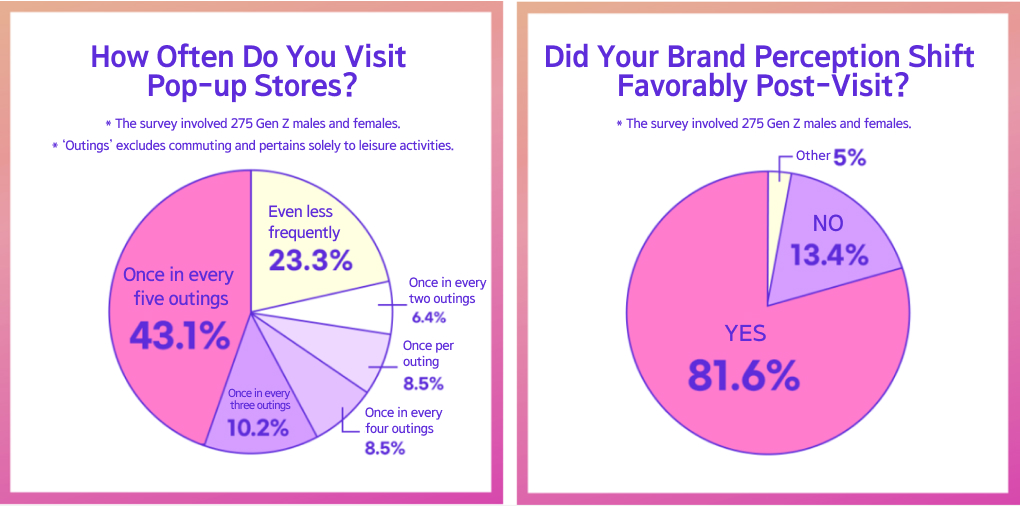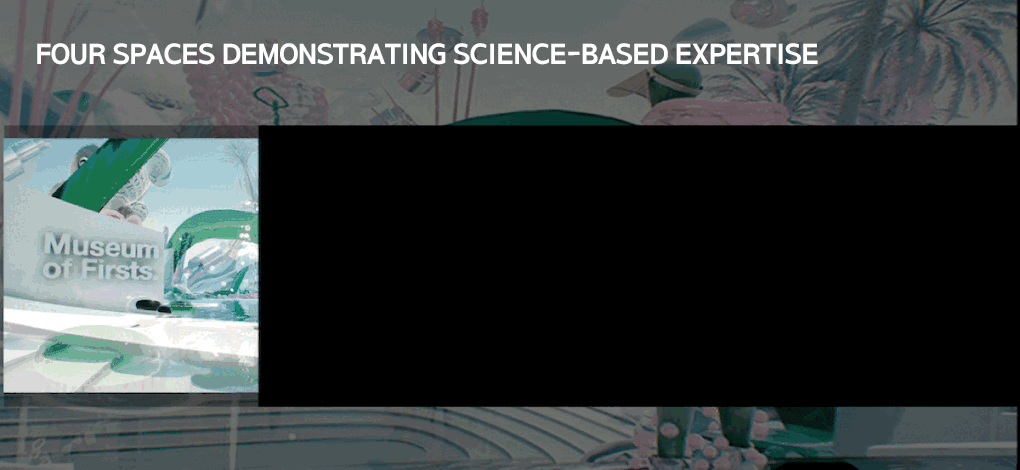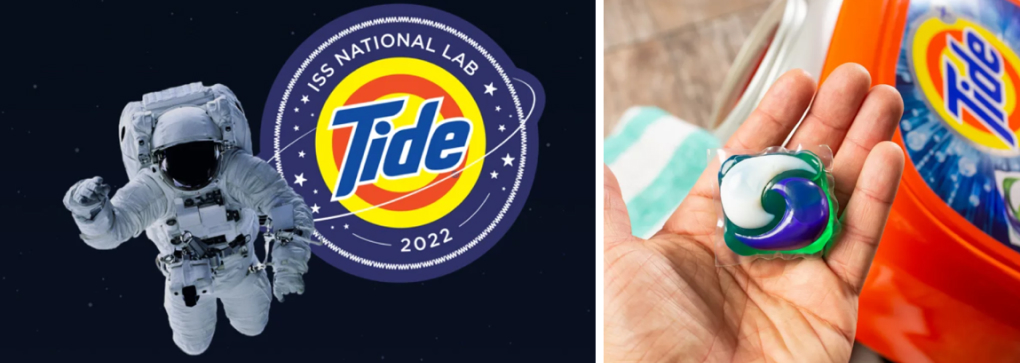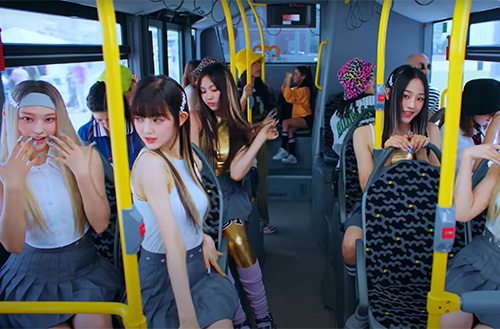

-
-
- 메일 공유
-
https://stories.amorepacific.com/en/how-global-beauty-companies-are-using-the-metaverse
How Global Beauty Companies Are Using the Metaverse

The Web 3.0 Trend: Heard of It, Never Fully Understood It
Part 3 – How Estée Lauder and P&G Are Using the Metaverse
Columnist
You Yeondong Amorepacific New Digital Business TF

In my previous article, I elucidated Charlotte Tilbury's strategic employment of the metaverse from the vantage point of the next commerce. In this sequel, we shall pivot to examine beauty conglomerates that harness the metaverse as a branding tool. Join me as we delve into how Estée Lauder and Procter & Gamble navigate the metaverse to narrate their brand stories and sculpt their identities.
The Ascent of Pop-up Stores as a Marketing Phenomenon
I belong to a discreet community of over 200 seasoned marketers. Earlier this year, during a focused study session, we discussed the “most promising marketing trends of 2023.” The consensus emerged: post-pandemic, brand-oriented pop-up stores are poised to reign as the preeminent marketing channel.
While the pop-up store trend was sown years ago, the current magnitude of brand investment in this space is astonishing. Historically, the arena of pop-up stores was monopolized by B2C corporations across sectors such as IT, beauty, and fashion. However, there's a palpable shift: even B2B enterprises, traditionally reluctant to engage directly with end consumers, are now unfurling their brand identities via pop-up outlets.
So, given that brands hold such a strong affection for pop-up stores, does customer response reciprocate this enthusiasm?

Source : Careet
According to a report by Careet, an overwhelming 97.2% of Gen Z respondents reported having visited pop-up stores, and a striking 81.6% conceded that the experience catalyzed a favorable shift in their brand perception. Moreover, 52.7% professed that these visits were instrumental in them opting for the brand's products and services.
The leisure repertoire for Gen Z has undergone a noticeable transformation. During my era of social rendezvous and romantic dates, the typical course consisted of “restaurant - café - cinema,” a sequence that contributed to the proliferation of multiplexes.

Source : Careet
However, the contemporary routine has incorporated an additional layer, evolving into a “restaurant - pop-up store - café – cinema” progression. In these pop-up sanctuaries, consumers immerse themselves in riveting brand stories, ingest playful and chic content, and disseminate these experiences across social media. Traditional retail spaces, merely focused on product displays, seem increasingly ill-equipped to command consumer attention.
But Opening a Pop-Up Store Isn't a Venture for Just Anyone
While pop-up stores continue to captivate consumer attention through their experiential allure, initiating these ventures is not easy for brands. The predicaments they face primarily bifurcate into fiscal exigencies and spatial impediments.
A considerable financial outlay is indispensable to establish a pop-up store, encompassing rental charges, fabrication expenses, and labor costs. Conventionally, brands orchestrate these temporary events for about two weeks. The financial commitment necessitated often ascends into the millions, thereby serving as a prohibitive hurdle for brands of smaller magnitude.
Simultaneously, pop-up stores grapple with an intrinsic drawback of limited reach. The geographic constriction implies that a customer in Busan is unlikely to experience an Amore pop-up in Seongsu, Seoul, just as Los Angeles-based pop-ups remain inaccessible to the broader global audience. In addition, the spatial limitation throttles the full manifestation of a brand's creative latitude.
Is this very limitation of the physical realm that has catalyzed the burgeoning interest in the metaverse's pop-up spaces?
Cost-Effective Metaverse Pop-up Stores: A Growing Trend Among Global B2C Brand
In the global B2C landscape, metaverse pop-up stores have surfaced as an indelible trend, predominantly spearheaded by the fashion sector. Brands that define luxury — such as Nike, Gucci, and Louis Vuitton — and high-street staples like H&M and Zara are intensifying their focus on metaverse marketing initiatives. Not to be outdone, global beauty brands are now carving out their digital territories within these metaverse pop-ups. Today, we will focus on two exemplary cases: Clinique and P&G.
1Clinique: Conveying a Narrative of Expertise

Source : Clinique SNS
Clinique has strategically positioned itself as a brand that garners consumer trust through rational rather than emotional appeals. With an emphasis on data-supported, scientifically validated messaging, the brand highlights its products' functional merits and efficacious attributes.
Mirroring this brand ethos, Clinique inaugurated its Metaverse Lab, Clinique Lab, this past March, leveraging the digital sphere to amplify its credibility and domain expertise. The lab is readily accessible via the brand's homepage, thus enhancing its user accessibility.

Source : Clinique Homepage
- 1) Museum of First: A curated space elucidating Clinique's pioneering trajectory in the beauty industry over the past five decades.
- 2) Science of Skincare: A haven for unraveling the impeccable science of skincare, fortified by potent ingredients and empirically substantiated formulations.
- 3) Skincare Knowledge: A learning platform that educates consumers on skin protection against light and harmful external environments.
- 4) Clinique Consultant: A tailored space for engaging in consultative dialogues about skincare and makeup concerns facilitated by Clinique's in-house experts.

Source : Clinique SNS
Can you discern the brand ethos that Clinique strives to communicate? Clinique Lab leverages the metaverse to transmit a compelling, immersive narrative grounded in safety and empirical validation.
2Corporate Branding in the Metaverse: The Procter & Gamble Approach
Next on our agenda is Procter & Gamble (P&G), a company that astutely employs the metaverse as a platform to articulate its corporate philosophy and overarching narrative. Though primarily a consumer goods conglomerate, P&G has gained notoriety for its avid engagement with technological innovation. It has allied with NASA to conceive detergents capable of functioning in deep-space environments and has deployed artificial intelligence to scrutinize consumer behavior patterns about its products.

Source : Tide Homepage
P&G's Audacious Metaverse Initiatives
Interestingly, P&G's most concentrated efforts are channeled into the metaverse, evidenced by their annual unveilings of groundbreaking projects at CES. Allow me to spotlight two of their current metaverse endeavors:
1The Beauty Sphere: Disseminating P&G's Philosophy of Responsible Beauty
P&G persistently propagates a philosophy of beauty underpinned by the principles of responsibility. This has been manifested within the metaverse, where the company also conveys narratives that align with responsible tenets, such as sustainability and safety.
Should you descend to the lower levels of their metaverse architecture, you will encounter a virtual botanical garden — an impeccable re-creation of the United Kingdom's Royal Botanic Gardens Kew.

Source : P&G SNS
In synergy with Kew, P&G pursues comprehensive research on natural botanical elements, integrating these across its extensive brand portfolio, a fact eloquently illustrated within its metaverse setting.
Within this innovative environment, you'll encounter an exhibition detailing P&G's fundamental ingredients and a display that delineates the specific products these ingredients deploy.
2Life Labs: A Testament to P&G Brands' Application of Cutting-Edge Technology
Procter & Gamble (P&G) excels at the corporate level and distinguishes itself at the brand level by implementing innovative technologies to offer an elevated customer experience. The company has curated specialized environments within the metaverse to engender immersive engagements with these state-of-the-art technologies.

Source : P&G SNS
- 1) Gillette: : This exclusive zone features a limited-edition collaboration with Bugatti and offers an engaging shaving and exfoliation racing game experience.
- 2) Oral-B: The exhibit unfurls the avant-garde iO10 with both iO technology and compelling clinical outcomes.
- 3) Charmin: A conscientious space fulfilling the imperative mission of establishing a healthy forest and propelling responsible forestry.
- 4) Virtual Home: A conscientious space fulfilling the imperative mission of establishing a healthy forest and propelling responsible forestry.
The Metaverse: Technological Epiphany or Fleeting Mirage?
We've scrutinized various beauty corporations presently harnessing the metaverse. Although adopting the metaverse is undoubtedly on an upward curve, it's equally valid that the platform continues to evoke a degree of unease and hesitancy. This dichotomy provokes skepticism concerning the genuine onset of a metaverse era.
While the metaverse's progress may not be as expeditious as some might wish, it is irrefutably gaining momentum. Case in point: Roblox, a vanguard in the metaverse realm, recently disclosed its second-quarter financials for 2023, boasting a 25% year-on-year uptick in Daily Active Users (DAU), totaling an impressive 65.5 million. This ascent follows significant growth in the preceding year, underscoring a consistent rise in user engagement.
Although the metaverse might appear somewhat nebulous to older generations, one can't help but ponder: Could it wield an influence akin to social media over the emerging Z+alpha generation? As this demographic comes to the fore, the potential impact of the metaverse on diverse industries becomes an increasingly captivating question.
-
Like
3 -
Recommend
2 -
Thumbs up
1 -
Supporting
0 -
Want follow-up article
0





